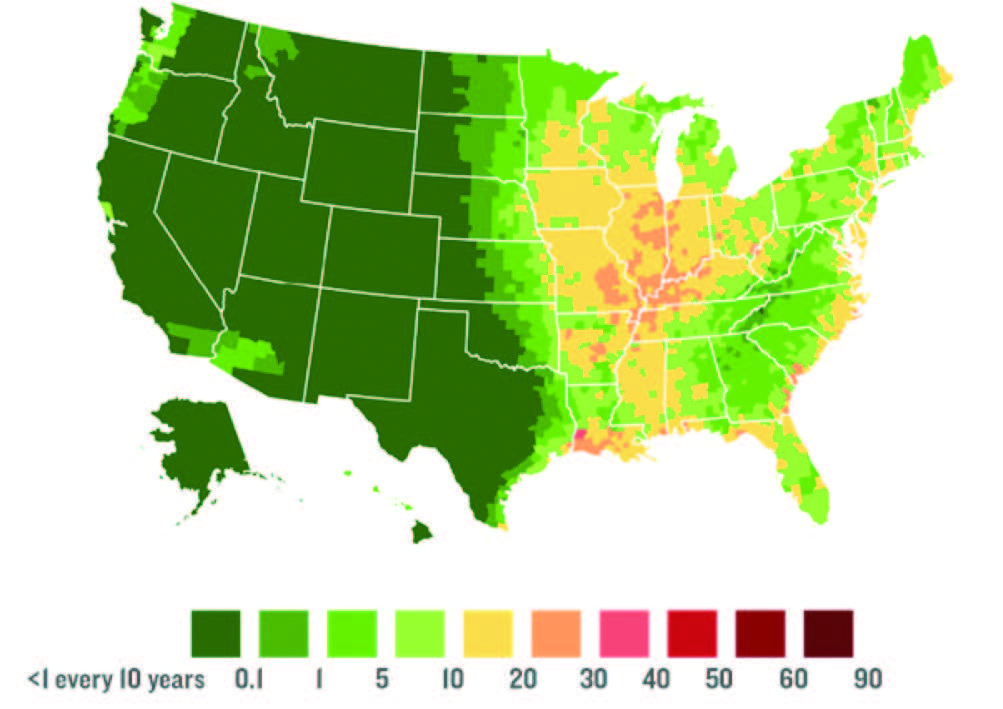7.3: Heat and Humidity
- Page ID
- 11177
Warming is also of direct concern. Advanced civilizations developed mostly in temperate climates; indeed, not one of the 50 nations with the highest standard of living today is in the tropics. Human comfort is better measured by a quantity called the wet-bulb temperature, which is the lowest temperature a damp surface can achieve in air of a given temperature and humidity. When the wet-bulb temperature exceeds about 35 °C (95 °F) the human body cannot transmit heat to the surrounding air fast enough to compensate for its internal production of heat, and body temperature rises to lethal values. This limiting wet-bulb temperature is very rarely exceeded in today’s climate, but such values are projected to become common in certain regions, such as the shores of the Persian Gulf, by late in this century. Mortality from heat waves is already of concern; for example, the 2003 heat wave in Europe is estimated to have killed at least 50,000 people. As mean temperatures climb, such heat waves become more common. However, deaths from hypothermia decline with increasing temperature, and as of this writing the data are ambiguous as to the net effect on mortality
Heat Stroke Risk Projection

Figure \(\PageIndex{1}\) presents an estimate of the number of days each year, by the end of this century, in which the combination of heat and humidity will be extremely dangerous, under emissions scenario RCP 8.5. (By comparison, such conditions today occur no more than once every 10 years, mostly in a small region of the Midwest.)

